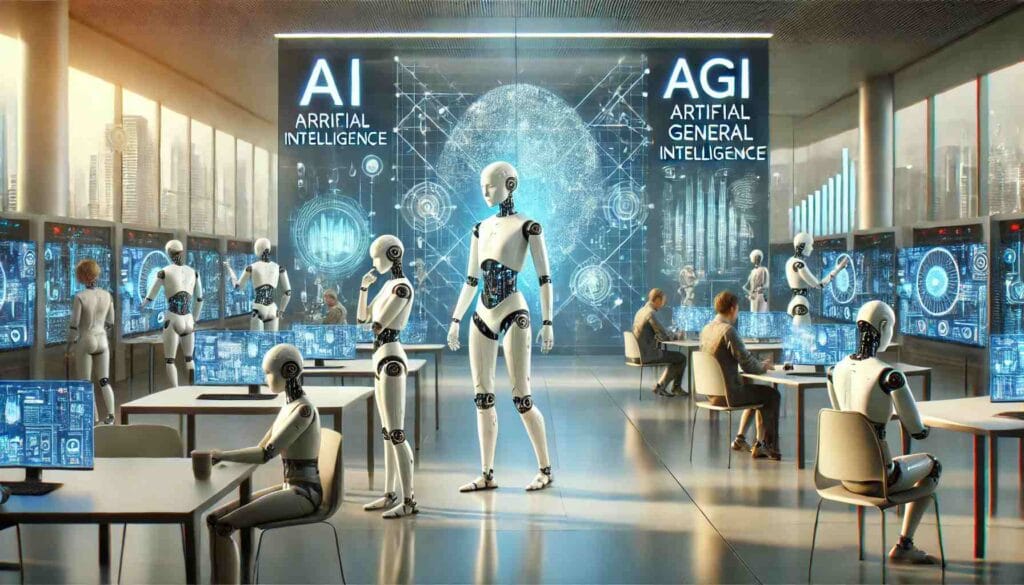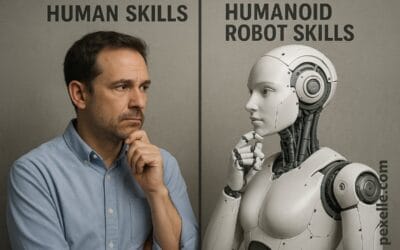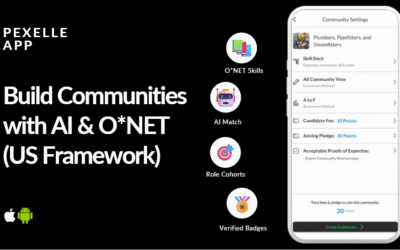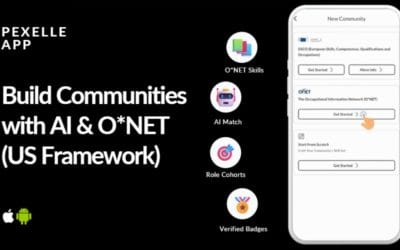The Difference Between AI and AGI: Understanding the Concepts

In the realm of artificial intelligence (AI), there is a significant distinction between narrow AI (or simply AI) and artificial general intelligence (AGI). These two terms often come up in discussions about the future of technology, but it’s essential to understand how they differ in scope, application, and potential.
What is AI?
Artificial intelligence, or AI, refers to machines or software designed to perform tasks that typically require human intelligence. AI systems are built to solve specific problems within defined environments. They are trained on vast amounts of data and use algorithms to make predictions, recognize patterns, or automate processes.
AI is widely used in various industries, including healthcare (diagnostic tools), finance (fraud detection), transportation (self-driving cars), and entertainment (recommendation systems). However, AI is considered “narrow” because it is designed to handle specific tasks and cannot adapt to different or unfamiliar situations beyond its programmed scope.
Examples of AI:
- Virtual Assistants: Programs like Siri, Google Assistant, and Alexa are examples of narrow AI. They can perform specific tasks like answering questions, setting reminders, and controlling smart devices, but they cannot handle tasks outside their design.
- Machine Learning Models: AI used in predictive analytics, fraud detection, or even facial recognition works within narrowly defined areas. These systems can recognize patterns and make predictions based on data but lack broader cognitive abilities.
What is AGI?
Artificial general intelligence (AGI), on the other hand, is a more advanced concept that refers to a type of AI capable of performing any intellectual task that a human can do. AGI would not be limited to narrow tasks but would possess a broad understanding of the world and be able to reason, learn, and adapt across different domains.
In other words, while current AI can only excel in specific fields, AGI would be able to switch between various tasks and learn new skills autonomously. AGI aims to exhibit human-like cognitive flexibility, creativity, and problem-solving capabilities. It is essentially the holy grail of AI research, as it would enable machines to think and act as humans do.
Potential Features of AGI:
- Autonomous Learning: AGI would be able to learn from experience without needing a vast amount of data.
- Creativity: It could generate innovative solutions to problems in a wide range of fields, from art to science.
- Adaptability: AGI could seamlessly transition between tasks, adjusting its methods to suit new environments or challenges.
- General Problem-Solving: AGI could apply reasoning to new, unforeseen problems, demonstrating a level of flexibility that narrow AI cannot.
Key Differences Between AI and AGI
- Scope of Functionality:
- AI is designed for specific tasks and can excel in those particular areas.
- AGI, however, is expected to handle a broad array of tasks with a general cognitive ability similar to that of humans.
- Learning Ability:
- AI needs to be trained on large datasets for specific tasks and often requires retraining when faced with new challenges.
- AGI would be able to learn and adapt to new situations autonomously, just like humans do.
- Problem-Solving:
- AI solves problems within the confines of its designated area, often requiring specialized approaches.
- AGI would be able to tackle problems from different domains, combining knowledge across various fields.
- Cognitive Flexibility:
- AI lacks the cognitive flexibility to shift between different types of tasks seamlessly.
- AGI would possess a level of general understanding that allows it to think and reason across a variety of contexts.
- Creation and Innovation:
- AI typically works based on pre-defined algorithms and data, limiting its creative capabilities.
- AGI would not only analyze and process information but also engage in innovative thinking, potentially contributing to advancements in science, art, and technology.
Challenges in Developing AGI
Creating AGI is a monumental challenge. While AI systems have made tremendous advancements, they are still far from achieving the general cognitive abilities of humans. Some of the major challenges include:
- Learning Efficiency: Unlike AI, which requires extensive data to learn, AGI would need to learn quickly and efficiently, much like humans.
- Understanding Context: AGI must be able to understand and interpret complex situations and contexts, something that AI struggles with.
- Ethical Concerns: The development of AGI raises significant ethical issues, such as the potential for autonomous decision-making and its implications for society.
The Future of AI and AGI
The future of AI is already unfolding, with numerous breakthroughs in narrow AI applications. However, AGI remains an aspirational goal that researchers and scientists are still working toward. While there is no consensus on when AGI will be achieved, it is expected that it will take decades of research, development, and innovation before we can create a machine with human-like intelligence.
In conclusion, AI and AGI represent different stages of artificial intelligence. AI, or narrow AI, is highly specialized and performs specific tasks, whereas AGI aspires to achieve a more general, adaptable form of intelligence that can solve problems across all domains. The journey toward AGI is long and complex, but it holds the potential to revolutionize the way we interact with technology and the world around us.
Source : Medium.com




